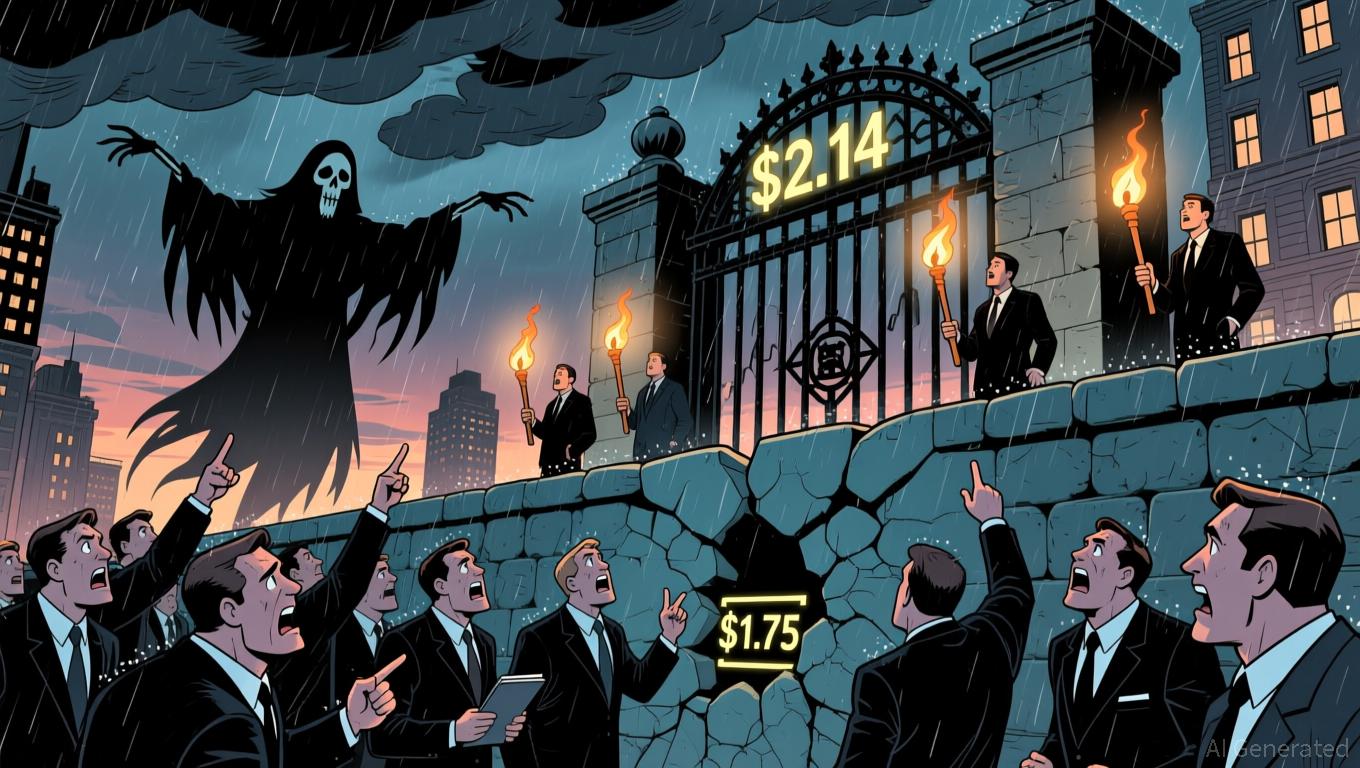Ethereum News Today: ETH Holds $2,700—Will Buyers Prevent a Drop to $2,500?
- Ethereum tests $2,700–$2,850 support as bearish momentum intensifies, with breakdown risks exposing $2,450–$2,550 levels. - Long-term holders sold 58,352 ETH ($175M) in one day, while whales accumulate, signaling potential redistribution. - Fed minutes triggered a seven-month low near $2,870, aligning with historical support clusters and 2021–2022 price range midpoints. - A $2,700–$2,850 defense could target $3,050–$3,150, but sustained recovery requires breaking above $4,200 trendline.
Ethereum (ETH) is at a crucial crossroads as bearish forces grow stronger, with the cryptocurrency challenging significant support zones that may shape its short-term direction. The coin has been moving within a downward channel, and both analysts and blockchain data point to possible triggers for a bounce as well as ongoing structural issues that could extend the current decline.
Technical signals indicate

Sentiment in the market remains negative, further weighed down by broader economic uncertainty. The publication of Federal Reserve minutes in late November sparked a rapid sell-off, driving ETH to a seven-month low near $2,870
The next move depends on whether buyers can maintain the $2,700–$2,850 support. If this level holds, ETH could aim for the $3,050–$3,150 imbalance zone, but unless it convincingly breaks above the downward trendline from $4,200, any rally is likely to be corrective in nature
Disclaimer: The content of this article solely reflects the author's opinion and does not represent the platform in any capacity. This article is not intended to serve as a reference for making investment decisions.
You may also like
XRP News Update: XRP ETF Buzz vs. Death Cross: Can the $1.75 Support Level Remain Intact?
- XRP faces critical junctures near $2.14 as Grayscale's spot ETF (GXRP) launch looms, with $1.75 support level pivotal for short-term stability. - A death cross pattern raises bearish concerns, suggesting potential 55% price drop to $1 if technical indicators fail to hold. - Institutional crypto products like Leverage Shares' 3x ETFs and 1inch's liquidity pools highlight growing institutional interest amid market volatility. - DeFi struggles with $12B idle capital while projects like Mutuum Finance aim to

Bitcoin Updates: Negative Derivatives Meet Optimistic Institutions as Bitcoin's Future Remains Uncertain
- Bitcoin fell below $85,500 amid bearish derivatives positioning, macroeconomic uncertainty, and dormant wallet sell pressure, with puts dominating calls at $85,000 strike price. - Institutional bulls like Michael Saylor's Strategy reported $2.8B Q3 profits from BTC holdings and pledged continued accumulation during the slump. - The Bitcoin for America Act proposes tax payments in BTC without capital gains liability, aiming to create a Strategic Bitcoin Reserve and modernize U.S. finance. - Derivatives pl

Bitcoin Experiences Sharp Decline as Macroeconomic Conditions Change: The Impact of Increasing Interest Rates and Heightened Regulatory Oversight on Cryptocurrency Values
- Bitcoin's 2025 late-year drop from $126,000 to $80,000 reflects heightened sensitivity to Fed policy shifts and regulatory pressures. - Fed officials like Susan Collins signaled "mildly restrictive" policy, crushing rate cut expectations and triggering 70% decline in December cut odds. - Regulatory crackdowns on crypto mixing and mining contrasted with institutional buying (e.g., Cardone Capital's $15. 3M Bitcoin purchase) amid market volatility. - Political uncertainty (60% expect Trump-era crypto gains
Bitcoin’s Abrupt Price Swings and Institutional Outflows: An In-Depth Analysis of Market Dynamics and Liquidity Challenges
- Institutional investors are shifting capital from Bitcoin to AI infrastructure, driven by higher returns in 2025. - Bitcoin's liquidity has declined, with order book depth dropping to $14M by mid-2025, exacerbating volatility. - Structural shifts, including mining repurposing and AI-focused capital flows, threaten Bitcoin's hash rate and market stability. - Alternative projects like XRP Tundra and AI-driven risks challenge Bitcoin's dominance, complicating investor strategies.